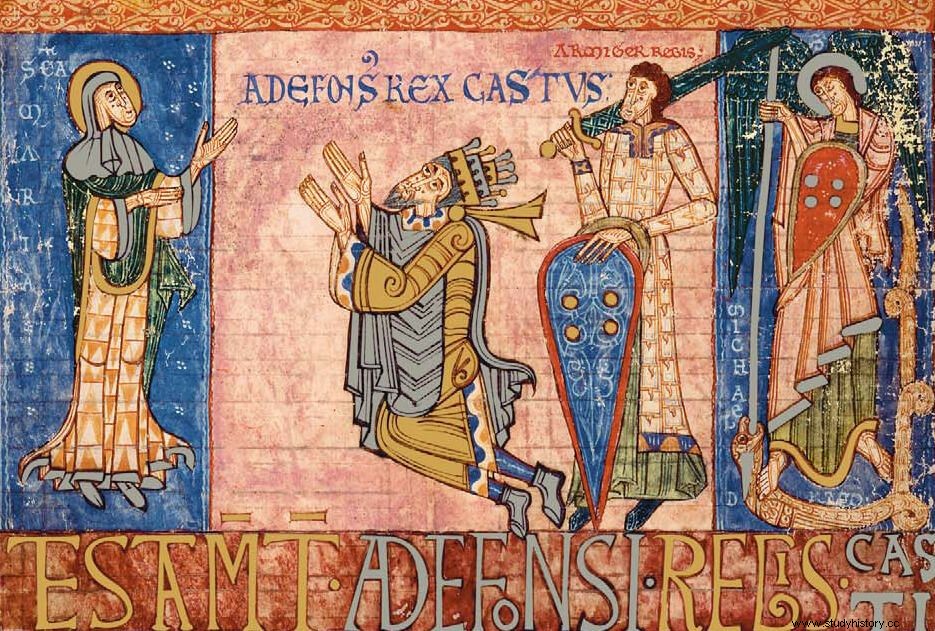
As a tradition, this 2022 returns to be the long-awaited IV Historical Micro-essay Contest Wake Up Ferro Editions. And what do we ask of you when we summon it? The same as in previous editions, that you show us your knowledge and expertise as historians by writing a non-fiction historical essay and join the prestigious authors who collaborate with us.
Finalists of the I Edition Finalists of the II Edition Finalists of the III EditionResults of the IV Desperta Ferro Historical Microessay Contest
After assessing all the texts under the historical and scientific rigor that characterizes us, the jury has chosen a winner who will be awarded with a premium subscription , a modality that allows you to receive for one year all the issues of our four magazines and specials, and three finalists who will receive a subscription to one of our magazines (Ancient and medieval , Modern History , Contemporary or Archeology and History , to choose).
You can now enjoy these four articles on our blog, and over the next few weeks we will be publishing many more of the texts submitted to the contest, there have been so many good ones that the decision It was easy...
Congratulations to the winners and many thanks to all the participants! We hope you all enjoy these great works.
Winner of the IV Desperta Ferro Historical Microessay Contest
Post-colonial echoes. A historiographic view
by Juan Ángel Argelina Díaz

The ruins of the past haunt us, pile up in the black box of the collective subconscious and wait, like storms, to rock the fragile ship of destiny. The pessimism of Walter Benjamin in his ninth thesis on the philosophy of history in the face of the destruction of "progress", not only contrasted with the interested Anglophile triumphalism of historians such as Toynbee, but also pointed almost prophetically to the bitter end of the civilizing order that the model industrial capitalist had designed since its colonial expansionist beginnings. A pessimism confirmed by the extreme violence of the war, in which Benedetto Croce recognized the signs of the arrival of the "new barbarians", capable of destroying any trace of civilization, showing us the mirror of our own time, in which we observe astonished the systematic annihilation of what we have always considered to be the roots of Western culture without making a minimum collective reflection on the path that has been traveled until now. Prison and the stalking of death led Marc Bloch to write one of the most impressive essays on the meaning of History in the 20th century, in which he raised his doubts about the ability of society to question its past and the objectivity of the historian to face it.
ReadFinalist of the IV Desperta Ferro Historical Microessay Contest
Asturorum Regnum, the sacred bastion of Alfonso II
by Samuel García Buenosaños

In the middle of the 8th century, the ancient Visigothic kingdom of Toledo had disappeared before the thrust of the Muslim hosts that supported the thriving Umayyad Caliphate, the one that extended its domains from the banks of the Indus to the coasts of the finis terrae Iberian. To the north of these coasts stood, and still stands, an imposing bastion sculpted in rock that had allowed its people to live for centuries outside the domination of the great powers that flanked it. Neither the Romans nor the Visigoths were ever able to consolidate effective control over the Cantabrians, Asturians and Vascones. Muslims were no exception.
ReadEl Mazarrón 2:a ship in the Phoenician-Iberian cultural exchange in the Mediterranean
by José Antonio Moya Montoya

The meeting between Iberians and Phoenicians must have been a transcendental moment for both cultures. It occurred in the development of the so-called Metal Age, between the Late Bronze Age and the Iron Age, a stage known as the Orientalizing Period. At that time, the metallurgy of metal alloys would give way to the most abundant and easiest metal to work with:iron. In the midst of those technological innovations, the inhabitants of the eastern shore of the Mediterranean, the Phoenicians, sailed along the Egyptian and North African coast until they reached the other shore, the westernmost, the furthest or Iberian as the Greeks called it.
ReadThe duty of arms and the defense of the Monarchy. Neighborhood organization in urban republics:aid, vigilance and loan of service to the king (16th and 17th centuries)
by Ricardo Martínez Sánchez

To introduce and illustrate the main issue, the defense of the land by the neighbors themselves, the threat from the sea turns out to be the best tool for it, which allows us to approach the socio-political context in which it will be developed. . The danger that the Spanish coast faced was always accused, but from the mid-15th century and especially the 16th and 17th centuries, it became a serious situation that affected the entire Mediterranean coast and represented a real risk for the survival of the coastal populations. The contingency that these inhabitants faced, for these dates, were, mainly, the Turkish-Berbers.
Read